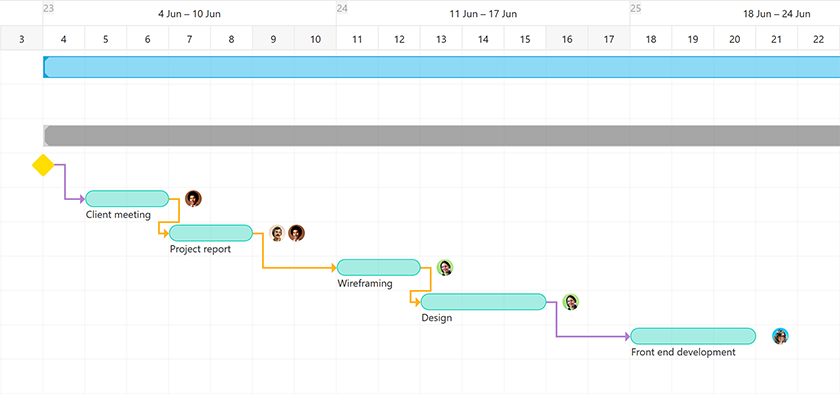What Is Waterfall Methodology?
The Waterfall methodology is a sequential and linear project management approach. At the outset of the project, stakeholders and clients’ demands are compiled to be adjusted by a project plan at a later date.
Using and understanding the waterfall method is very simple. For each phase to begin, the prior phase must be completed. And so, no overlapping between phases exists, following steadily down like a waterfall.
Who uses the Waterfall method?
Some of the industries that frequently employ the structured waterfall approach are manufacturing, construction, IT, and software development.
Gantt charts are the ideal mechanism for Waterfall project managers. Using the Gantt chart, you will trace sub-tasks, dependencies, and every step of the project as it progresses through its life cycle.

The Phases of the Waterfall Model
The waterfall concept consists of five to seven stages that comply with a strict linear order. The phases’ exact names differ, but were originally described by its inventor, Winston W. Royce, as follows:

- Requirements − The first stage is all about gathering comprehensive information about what the customer requires in this project. You do this in order to plan each phase without any further customer correspondence until the project is complete. The requirements should be clear and a requirement specification document is to be distributed to your team.
- Design − Your team designs the framework following the specifications laid out. When brainstorming and theorizing potential solutions to the specifications, this is considered a logical design sub-phase. Yet, as they render functional requirements out of these theoretical ideas, they are in the sub-phase of physical design.
- Implementation − The implementation process is where programmers integrate the requirements and specifications of the previous phases and generate the actual functional code.
- Integration and Testing − Once all the units or coding developed during the implementation process have been completed, the product testing may begin for any defects or errors that may occur. If significant problems emerge, the project may need to go back to phase one for re-evaluation.
- Deployment of system − When functional and non-functional testing has been carried out; the product is deployed in the consumer environment or introduced to the market.
- Maintenance − Any problems may occur after the product has been shipped to the customer and is being used. Your team may need to develop and release patches and upgrade improved versions to enhance the product.
Pros & Cons of the Waterfall Methodology
There are a number of reasons why project managers want to employ the Waterfall project management approach. Here are some of the benefits:
- Simple and easy to learn, use, and manage assignments.
- Easy to handle due to the rigidity of the model. Each phase involves unique deliverables and a review process.
- Offers reliable forecasts of the project expenses, resources, and deadlines hanks to its fully defined project calendar.
- Works best for smaller projects where specifications are well defined.
- Clearly defined stages.
- Well understood milestones.
Of course, there are disadvantages to the use of the Waterfall approach as well. Here are some of the drawbacks of this approach:
- At the outset of the project, it will be impossible for consumers to express all their desires.
- Not a suitable model for complex, object-oriented projects.
- Poor model for long-term and ongoing activities.
- Progress is difficult to assess during phases.
- Can not match changing conditions.
- A high degree of risk and uncertainty.
| References |
| For more information, visit this site. |

Leave A Comment?